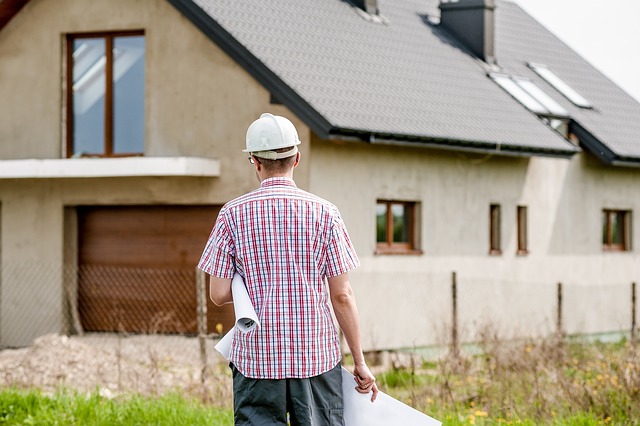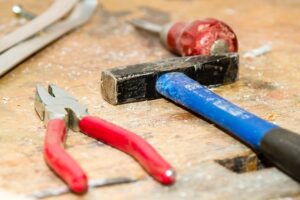Refreshing your home's interior through thoughtful flooring installation or repair is a key aspect of effective home maintenance and can significantly enhance both the aesthetic appeal and functionality of your living spaces. This guide for homeowners embarking on flooring projects as part of their home repair and maintenance efforts highlights the necessity of careful planning, precise measurements, and quality execution. It stresses the importance of removing old flooring, cleaning the subfloor thoroughly, and preparing it to support new materials. When choosing your flooring, consider factors like durability, maintenance requirements, and personal style to align with your home's needs and your own preferences. Proper subfloor preparation may include leveling irregularities and laying vapor barriers for a stable foundation. Installation techniques vary by material; hardwood might be nailed or use a floating locking system, while tiles typically require a thin-set mortar base, and carpets necessitate padding and tack strips. Attention to detail throughout the installation is crucial to prevent issues like gaps or unevenness. Sealing seams and joints protects against moisture and ensures a seamless finish. Post-installation cleanup and thorough inspections are vital to confirm everything is secure and aligned. Regular maintenance post-installation helps maintain the updated look and extends your home's lifespan, making it a wise investment in your property's upkeep and charm.
Refreshing your home’s aesthetic can be as simple as a floor makeover. Whether you’re considering professional installation or DIY repairs, understanding the nuances of your current flooring and the options available is key to a successful home revitalization. This article delves into the essentials of assessing your floors, guiding you through the process of choosing between a repair or a full installation, and offering both expert and hands-on approaches for enhancing your space within the realm of Home Repair And Maintenance. From there, navigate the step-by-step professional installation guide tailored to various floor types or explore effective DIY techniques suitable for common repairs and updates, ensuring your home’s interiors gleam with a refreshed look.
- Assessing Your Current Flooring: Understanding When Installation or Repair Is Necessary
- The Step-by-Step Guide to Professional Flooring Installation
- Effective DIY Techniques for Common Flooring Repairs and Updates
Assessing Your Current Flooring: Understanding When Installation or Repair Is Necessary

When considering a refresh for your home’s aesthetic, the condition of your flooring can significantly impact the overall look and feel of each room. Assessing your current floors is a crucial step in determining whether installation or repair is necessary to achieve the desired update. Homeowners should inspect their floors regularly for signs of wear and tear that could compromise both safety and appearance. Signs such as loose boards, gaps between planks, worn-out carpeting, or tiles with chips and cracks are indicators that repairs are in order. In some cases, a thorough cleaning and refinishing can restore the luster of hardwood floors or breathe new life into tiled surfaces. However, if the damage is extensive or the flooring is outdated, installation of new materials might be the most effective solution. Evaluating the age of your flooring, the presence of stains that resist cleaning efforts, and the overall structural integrity are key factors in making this decision. Proactive home repair and maintenance can prevent minor issues from escalating, ensuring that your floors remain a vibrant and integral part of your living space for years to come. Regular upkeep not only extends the lifespan of your flooring but also contributes to the safety and comfort of your home environment. Whether through strategic repairs or complete installation, refreshing your home’s look often begins with a thorough assessment of what lies beneath your feet.
The Step-by-Step Guide to Professional Flooring Installation

When considering a refresh for your home’s appearance, flooring installation and repair play a pivotal role in transforming the ambiance of any space. A professional flooring installation is not merely about laying down new materials; it encompasses meticulous preparation, precise measurement, and careful execution to ensure a seamless and durable finish. Here’s a step-by-step guide to achieve this:
Begin by removing any existing flooring, which may involve lifting carpet, tiles, or prying up old wooden planks. Thoroughly clean the subfloor to remove debris and ensure a solid foundation for your new flooring. Measure the room’s dimensions accurately to determine the amount of material needed, accounting for cuts around doors, windows, and other obstacles. Choose high-quality materials suitable for your home repair and maintenance needs, considering factors like durability, maintenance requirements, and aesthetic preferences.
Professional installation starts with preparing the subfloor. This may include leveling any uneven areas, applying a vapor barrier if necessary, and ensuring the surface is clean and dry. The type of flooring will dictate specific installation methods; for instance, hardwood requires nailing or stapling to a wood subfloor or using a locking system for floating floors. Tiles typically require a thin-set mortar base, while carpet installation involves padding and tack strips around the perimeter. Each step must be executed with care to avoid issues like gaps, unevenness, or buckling that could arise post-installation. After laying the flooring, seams and joints need to be sealed for a uniform look and to prevent moisture from seeping in. Finally, the installation concludes with a thorough cleanup of any residual materials and a final inspection to ensure everything is aligned and secure. This process not only refreshes your home’s look but also enhances its longevity and functionality. Regular maintenance after installation further protects your investment and maintains the fresh, updated feel of your living spaces.
Effective DIY Techniques for Common Flooring Repairs and Updates

Refreshing your home’s look can be as simple as a focused effort on flooring installation or repair. By carefully assessing your current floors through the lens of Home Repair And Maintenance, you can pinpoint areas that require attention. Whether you opt for a professional touch in flooring installation or tackle common repairs with effective DIY techniques, the impact on your living space is transformative. Updating your floors not only enhances their functionality but also significantly improves the overall aesthetic of your home. Consider this your step towards a rejuvenated residence that reflects both style and resilience.
